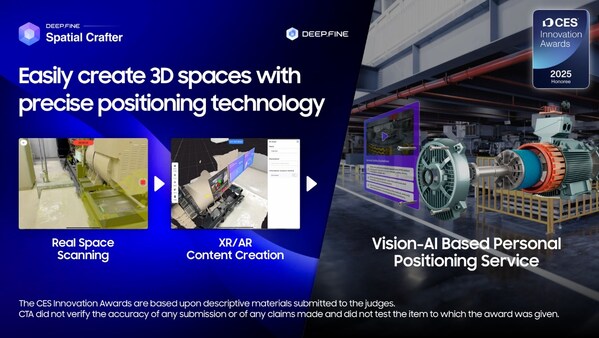At The Digital Twin Insider, we had the pleasure of interviewing David Taylor, Co-founder, and Senior Product Officer at Next Earth. In boasting approximately 50,000 landowners, Next Earth is regarded as the largest ‘Metaverse’ of its kind – depicting a much stronger community than other projects of a similar capacity.
Having launched back in August of 2021, the traction that Next Earth has generated is second to none – an impressive feat considering their 300,000 registered users in under 18 months. At The Digital Twin Insider, we were excited to uncover more about this booming project – understanding how and why it has reached such levels of prosperity.

What are the aims and goals of Next Earth?
Next Earth’s aims and goals reside in their ethos of “creating a fair digital life for consumers”; as there is an ongoing battle between the corporate cloud Web2 and Web3, Next Earth envisions the Metaverse to be the perfect opportunity to realign the power struggle between consumers and creators:
“Our end goal – just imagine if Facebook gave you a revenue share from all the monetization that they do with your data. That could solve all sorts of different problems.”
This is one of the first times The Digital Twin Insider has seen a ‘Metaverse’ virtual world orientated around planet Earth. We were quick to realize the significance of this project and what it might mean for creators and consumers alike; Next Earth’s registered user and landowner numbers demonstrate that the concept behind it could be more fruitful than previous virtual land projects we have seen in the past.
Many businesses may want to enter the Metaverse space, but it can be difficult. Either due to unfamiliarity with the supporting technology or not knowing how to actually conduct business in the space – being in a video game-like environment can make this more challenging. This simply emphasizes the importance of a planet Earth-orientated ‘Metaverse’:
“Every single business on the planet has some sort of relevance to a geological location, or a geographical location.”
This emphasizes the importance of familiarity for businesses and consumers alike to readily enter this new space. Many companies feel the need to comply with producing a gamified experience regardless of their service – resulting in an entirely new risk profile. Why would a financial services business build a gamified experience?
“There are lower hanging fruit opportunities for business owners to join the metaverse, which is moving some of their operations from Web2 to Web3, by also seizing their relevance to geographical location. And that means that when a business comes to Next Earth, they are not required to completely revamp their entire business strategy.”
The significant difference between Web3 and the Metaverse
Web3 and the Metaverse are frequently described as an evolution of the internet we know and use today. Looking at our internet today, cloud computing is effectively the backend – and software service applications are the current front end of the internet and websites. When talking about the evolution of the internet, here is what David had to say:
“The Metaverse as a concept is the new front end – what users are interacting with and not just in terms of 3D and virtual spaces, but also in terms of economic relationships. How do I buy things? What are the economic contracts between me and the service providers? Do I generate revenue from this or that? What can I do as a user on the internet? And the Metaverse is going to be the answer to that. However, the metaverse also has the new internet also has a backend, which is run by Web3.”
Web3 empowers the Metaverse by bringing us to a new iteration of online technology. It is common for misconceptions to be made between these two concepts – however, it is very clear that they are intrinsically different, having formed a mutualistic relationship. The Metaverse simply cannot exist without Web3 – and it may be argued that Web3 cannot be experienced without the Metaverse.
Considering the average human spends around 50% of their wake time plugged into online communities and platforms – there comes a point where an individual’s digital life becomes more important than their physical life:
“The way I like to think about it is that the Metaverse is often being referred to as a virtual space, somewhere I can go to and do things – and I don’t think it’s a point in space, I think it’s a point in time.”
Could the onset of a mainstream Metaverse indicate the turning point where humans truly do care more about their online presence? Some would say that we have already reached that within the internet’s current climate – however, the Metaverse can only make it better:
“We generate tons of data that is being monetized without our consent or without us getting any revenue share. We are already living in some kind of proto-verse, but it’s fragmented. According to Dashlane, an average internet user has 150 different internet accounts.”
“The Metaverse gives you an opportunity and a vision for having this unified experience when you have one digital avatar instead of having 150, which is basically all of our internet accounts in different portals. But we realized really quickly that without creating an underlying economic foundation for the Metaverse, you’re going to basically recreate what we did in Web2.”
Next Earth’s NEOs project
NEOs is an operating system for the Metaverse designed to solve the middleware problem and make it easier for businesses to integrate with Web3. It is a fully Web2-compatible system, so Web2 developers can create smart contracts and make use of Web3 infrastructure in any programming language without needing to understand it. Next Earth is truly pushing for next-level accessibility – removing the barriers which may currently limit businesses from porting to Web3, and consequently, the Metaverse.
Containing four different API families, NEOs includes an Object API to read virtual land data, a Building API to create applications, a Minting API to create NFT collections, and a Controller API to update dynamic NFTs. This provides businesses with access to its technology and teaches them how to design their own dynamic NFTs.
It is evident that Next Earth is a true pioneer in the space; they are building into the Web3 and Metaverse ecosystem in a way that gently encourages businesses to enter, driving us ever closer to realizing its true potential. Keep your eyes out for Next Earth, and stay tuned for Part 2.
If you found this article to be informative, you can explore more current Digital Twin news here exclusives, interviews, and podcasts.












